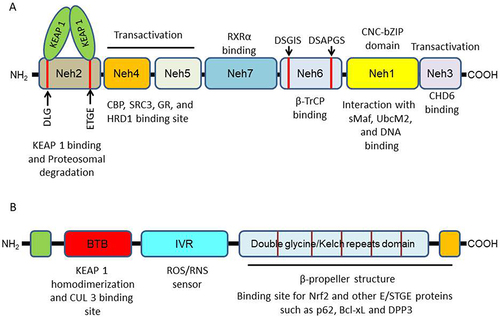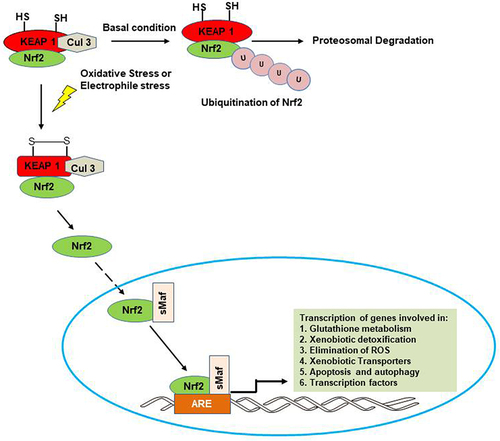Figures & data
Figure 1 Photochemical generation of ROS during PDT. Upon absorption of light of appropriate wavelength by the PS, an electron is elevated to an excited singlet state (S1) from the singlet ground state (S0). This excited singlet state is transient and can release energy through photon emission (fluorescence). Alternatively, it may undergo intersystem crossing, leading to the formation of a long-lived excited triplet state (T1). The T1 state is responsible for generating reactive species, including O2•-, H2O2, HO• and 1O2 through both type I and type II reactions.

Figure 2 Protein structure of (A) Nrf2 and (B) KEAP1 showing different domains.

Figure 3 Activation and response of Nrf2. Under normal condition, KEAP1 binds Nrf2 and package it for ubiquitination and proteosomal degradation with the help of Cullin 3-E3 ubiquitin ligase. In the presence of a stressor such as ROS and electrophiles, Nrf2 is activated and translocated into the nucleus where its binding to the antioxidant response element sequence leads to transcription of different cytoprotective genes.

